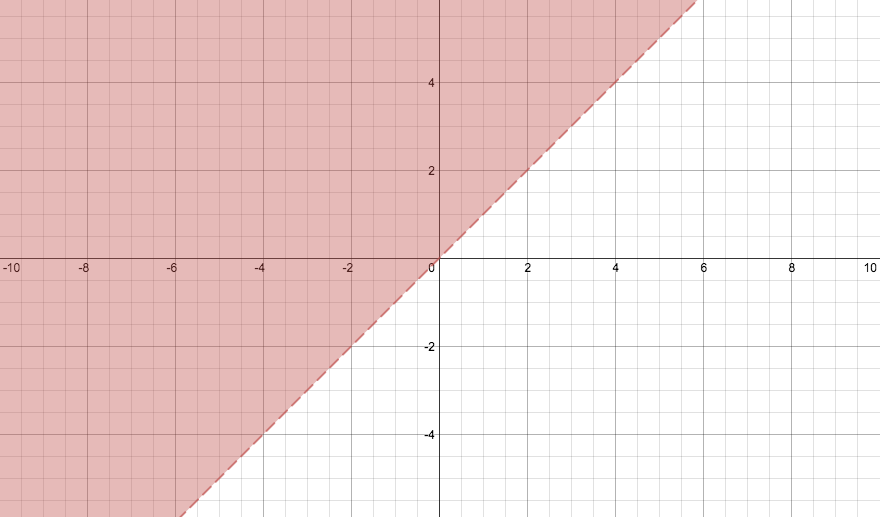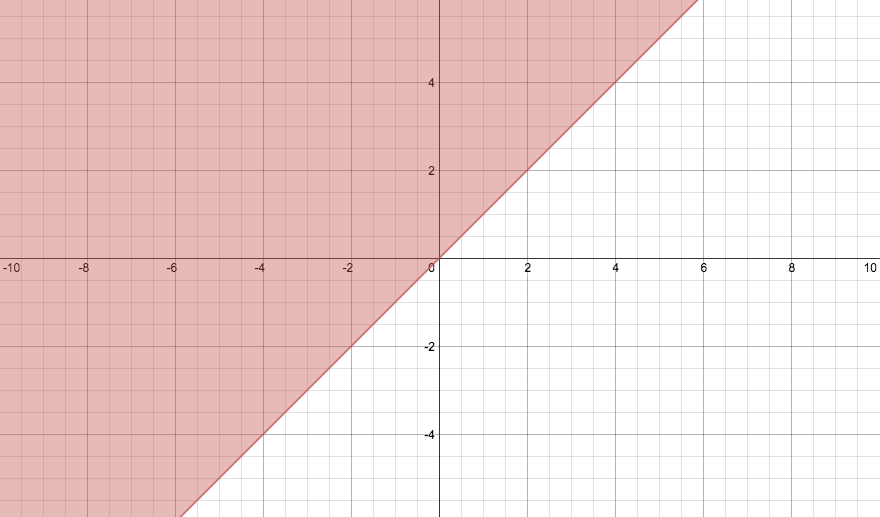What is an inequality?
1 Answer
An inequality is simply an equation where (as the name implies) you don't have an equal sign. Rather, inequalities deal with more nebulous greater than/less than comparisons.
Let me use a real life example to communicate this.
You buy 300 chickens that you're going to cook at your restaurant tonight for a party. Your across-the-street rival Joe looks at your purchase and responds "tut tut, still a lot less than what I have," and walks away with a smirk.
If we were document this mathematically using an inequality, we'd get something like this:
Chickens you have
Remember the crocodile mouth from elementary school? That is pretty much all of what inequalities are about.
Now we also have what are called inequality functions. And those, as you may have guessed, simply look much like this:
Of course, the croc's mouth could be pointing both ways, and we could also have a
The graphs of these functions look very much like linear equations, as you can see below:

This graph represents the equation

This graph represents the equation
As I mentioned before, inequality equations look very much like linear ones. However, if you notice, there's a shading on the left hand side of both graphs, and a dashed line on the
This is simply because when you have an inequality, there is a vast range of solutions that can satisfy the equation, a range not limited to a line. In the case of
In addition, with the
Hope my overly-thorough explanation helps :)

